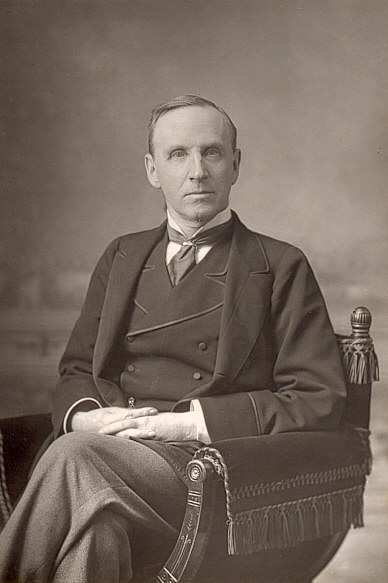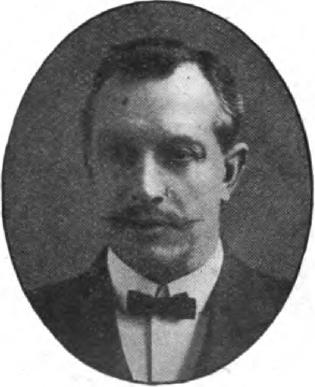Newcastle Upon Tyne (UK Parliament Constituency) on:
[Wikipedia]
[Google]
[Amazon]
Newcastle-upon-Tyne was a parliamentary borough in the county of
 * Cowen lost the support of the local Liberal Association during the campaign period, and Liberal supporters were urged to only vote for Morley.
Morley was appointed
* Cowen lost the support of the local Liberal Association during the campaign period, and Liberal supporters were urged to only vote for Morley.
Morley was appointed 


Northumberland
Northumberland () is a county in Northern England, one of two counties in England which border with Scotland. Notable landmarks in the county include Alnwick Castle, Bamburgh Castle, Hadrian's Wall and Hexham Abbey.
It is bordered by land ...
of the House of Commons of England from 1283 to 1706, then of the House of Commons of Great Britain from 1707 to 1800 and of the House of Commons of the United Kingdom from 1801 to 1918. It returned two Members of Parliament
A member of parliament (MP) is the representative in parliament of the people who live in their electoral district. In many countries with bicameral parliaments, this term refers only to members of the lower house since upper house members of ...
(MPs), elected by the bloc vote system.
Newcastle first sent Members to Parliament in 1283, although it was not always possible to act upon the writ of summons, which was disregarded on at least four occasions (1315, 1327, 1332 and 1337) because of warfare with the Scots.
The constituency was abolished in 1918, being split into four divisions; Newcastle-upon-Tyne Central, Newcastle-upon-Tyne East, Newcastle-upon-Tyne North and Newcastle-upon-Tyne West.
Boundaries
The constituency was based upon the town, later city, ofNewcastle upon Tyne
Newcastle upon Tyne ( RP: , ), or simply Newcastle, is a city and metropolitan borough in Tyne and Wear, England. The city is located on the River Tyne's northern bank and forms the largest part of the Tyneside built-up area. Newcastle is ...
in the historic county of Northumberland
Northumberland () is a county in Northern England, one of two counties in England which border with Scotland. Notable landmarks in the county include Alnwick Castle, Bamburgh Castle, Hadrian's Wall and Hexham Abbey.
It is bordered by land ...
in North East England. In 1848, the constituency boundaries were described in ''A Topographical Dictionary of England''.
The borough first exercised the elective franchise in the 23rd of Edward the First, since which time it has returned two members to parliament: the present electoral limits are co-extensive with those of the county of the town, comprising 5730 acres; the old boundaries, which were abrogated in 1832, included 2700 acres only.When the House of Commons debated the boundaries to be used from 1832, the Tory Party suggested including Gateshead (to the south) and South Shields (to the east) within the Newcastle-upon-Tyne constituency. The Whigs resisted this idea, so these two neighbouring settlements were not incorporated into this seat. The contents of the parliamentary borough, as defined by the
Parliamentary Boundaries Act 1832
The Parliamentary Boundaries Act 1832 was an Act of the Parliament of the United Kingdom which defined the parliamentary divisions (constituencies) in England and Wales required by the Reform Act 1832. The boundaries were largely those recommen ...
(2 and 3 Wm. 4, c. 64) were:The Town and County of the Town of Newcastle and the several Townships of Byker, Heaton, Jesmond, Westgate, and Elswick.The boundaries remained unchanged from 1832 until the area was divided into single member constituencies in 1918. These were not necessarily identical to the boundaries used for local government purposes. In the period after 1885, the constituency was surrounded by Wansbeck to the west and north,
Tyneside
Tyneside is a built-up area across the banks of the River Tyne in northern England. Residents of the area are commonly referred to as Geordies. The whole area is surrounded by the North East Green Belt.
The population of Tyneside as publishe ...
to the north east and east, Jarrow to the south east, Gateshead to the south, and Chester-le-Street
Chester-le-Street (), also known as Chester, is a market town and civil parish in County Durham, England, around north of Durham and also close to Sunderland and Newcastle upon Tyne. It is located on the River Wear, which runs out to sea at ...
to the south west.
Members of Parliament
Party affiliations are derived from Stook Smith and Craig (see reference section below). Tory is used prior to the 1835 general election and Conservative from that time. Liberal candidates (as listed by Craig) before the formal creation of the party, shortly after the 1859 general election, are listed as Whig or Radical if the information is available in the work by Stooks Smith. MPs, who were known by the same name, are distinguished in the table below and the election results by a number in brackets after the name. It is not suggested that such numbers were used by contemporaries of the individuals so numbered.MPs 1386–1660
MPs 1660–1918
Elections
The bloc vote electoral system was used in elections to fill two seats andfirst past the post
In a first-past-the-post electoral system (FPTP or FPP), formally called single-member plurality voting (SMP) when used in single-member districts or informally choose-one voting in contrast to ranked voting, or score voting, voters cast thei ...
for single member by-elections. Each voter had up to as many votes as there were seats to be filled. Votes had to be cast by a spoken declaration, in public, at the hustings
A husting originally referred to a native Germanic governing assembly, the thing. By metonymy, the term may now refer to any event (such as debates or speeches) during an election campaign where one or more of the candidates are present.
Devel ...
(until the secret ballot was introduced in 1872).
''Note on percentage change calculations:'' Where there was only one candidate of a party in successive elections, for the same number of seats, change is calculated on the party percentage vote. Where there was more than one candidate, in one or both successive elections for the same number of seats, then change is calculated on the individual percentage vote (if applicable).
The reference to some candidates as Non Partisan does not, necessarily, mean that they did not have a party allegiance. It means that the sources consulted did not specify a party allegiance.
Before the Representation of the People Act 1832
The Representation of the People Act 1832 (also known as the 1832 Reform Act, Great Reform Act or First Reform Act) was an Act of Parliament of the United Kingdom (indexed as 2 & 3 Will. IV c. 45) that introduced major changes to the electo ...
, the borough had an electorate limited to its freemen. There were about 2,500 voters in the second half of the 18th century.
Elections of the 1710s
Elections of the 1720s
* ''Death of Blackett, in 1728'' * ''On petition Carr vice Blackett''Elections of the 1730s
Elections of the 1740s
Elections of the 1750s
Elections of the 1760s
Elections of the 1770s
* ''Death of Blackett''Elections of the 1780s
Elections of the 1790s
* ''Resignation of Brandling in December 1797''Elections of the 1800s
Elections of the 1810s
* ''Ridley succeeded as the 3rd Baronet, upon the death of his father (and predecessor as MP) in 1813''Elections of the 1820s
Elections of the 1830s
Ridley's death caused a by-election.Elections in the 1840s
Elections in the 1850s
Blackettresigned
Resignation is the formal act of leaving or quitting one's office or position. A resignation can occur when a person holding a position gained by election or appointment steps down, but leaving a position upon the expiration of a term, or choos ...
due to ill health, causing a by-election.
Headlam was appointed Judge-Advocate General of the Armed Forces, requiring a by-election.
Elections in the 1860s
Ridley resigned after being appointed a Copyhold, Inclosure and Tithe Commissioner.Elections in the 1870s
Cowen's death caused a by-election, at which his son was elected.Elections in the 1880s
Dilke's resignation caused a by-election. * Cowen lost the support of the local Liberal Association during the campaign period, and Liberal supporters were urged to only vote for Morley.
Morley was appointed
* Cowen lost the support of the local Liberal Association during the campaign period, and Liberal supporters were urged to only vote for Morley.
Morley was appointed Chief Secretary to the Lord Lieutenant of Ireland
The Chief Secretary for Ireland was a key political office in the British administration in Ireland. Nominally subordinate to the Lord Lieutenant, and officially the "Chief Secretary to the Lord Lieutenant", from the early 19th century u ...
, requiring a by-election.


Elections in the 1890s
Morley is appointedChief Secretary to the Lord Lieutenant of Ireland
The Chief Secretary for Ireland was a key political office in the British administration in Ireland. Nominally subordinate to the Lord Lieutenant, and officially the "Chief Secretary to the Lord Lieutenant", from the early 19th century u ...
, requiring a by-election.
Elections in the 1900s
Elections in the 1910s
General Election 1914–15: Another General Election was required to take place before the end of 1915. The political parties had been making preparations for an election to take place and by the July 1914, the following candidates had been selected; *Liberal:Edward Shortt
Edward Shortt, KC (10 March 1862 – 10 November 1935) was a British lawyer and Liberal Party politician. He served as a member of David Lloyd George's cabinet, most significantly as Home Secretary from 1919 to 1922.
Background and educatio ...
*Labour: Walter Hudson
*Unionist: Walter Richard Plummer, Nicholas Grattan-DoyleYorkshire Post and Leeds Intelligencer 14 Sep 1914
See also
* History of parliamentary constituencies and boundaries in NorthumberlandNotes
References
* ''Boundaries of Parliamentary Constituencies 1885-1972'', compiled and edited by F. W. S. Craig (Parliamentary Reference Publications 1972) * ''British Parliamentary Election Results 1832-1885'', compiled and edited by F. W. S. Craig (Macmillan Press 1977) * ''British Parliamentary Election Results 1885-1918'', compiled and edited by F. W. S. Craig (Macmillan Press 1974) * ''Electoral Reform in England and Wales'', by Charles Seymour (David & Charles Reprints 1970) * ''The House of Commons 1754-1790'', by SirLewis Namier
Sir Lewis Bernstein Namier (; 27 June 1888 – 19 August 1960) was a British historian of Polish-Jewish background. His best-known works were ''The Structure of Politics at the Accession of George III'' (1929), ''England in the Age of the Ameri ...
and John Brooke (HMSO 1964)
* ''The Parliaments of England'' by Henry Stooks Smith (1st edition published in three volumes 1844–50), second edition edited (in one volume) by F. W. S. Craig (Political Reference Publications 1973)
* ''Who's Who of British Members of Parliament: Volume I 1832-1885'', edited by M. Stenton (The Harvester Press 1976)
* ''Who's Who of British Members of Parliament, Volume II 1886-1918'', edited by M. Stenton and S. Lees (Harvester Press 1978)
*
{{DEFAULTSORT:Newcastle
Politics of Newcastle upon Tyne
Parliamentary constituencies in Tyne and Wear (historic)
Parliamentary constituencies in Northumberland (historic)
Constituencies of the Parliament of the United Kingdom established in 1295
Constituencies of the Parliament of the United Kingdom disestablished in 1918